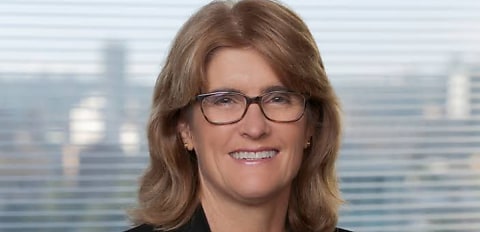Speaking at the Australian Business Economists annual dinner, yesterday (22 November), Reserve Bank of Australia (RBA) governor Michele Bullock confirmed that the inflation challenge is “increasingly homegrown”.
Ms Bullock’s speech followed the release of the November monetary policy minutes, when the RBA broke the streak of four consecutive cash rate holds to increase the rate by 0.25 bps to 4.35 per cent.
Senior economist at NAB, Taylor Nugent, stated that the major lender expects the next rate hike in February, forecasting the rate to be moved to 4.60 per cent.
Mr Nugent added that comments by Ms Bullock at the annual dinner that the RBA would aim for the middle of the 2–3 per cent target, rather than just the cap of 3 per cent “jar with the inflation tolerance suggested in yesterday’s minutes in the context of the November forecasts”.
AMP’s head of strategy and chief economist Shane Oliver took to X (formerly Twitter) to provide his view on Ms Bullock’s speech and what it means for future rate decisions.
Mr Oliver stated that her comments did not have the same “sense of urgency emerging as was the case a month ago”, but still their hawkish nature alongside the recent minutes pointed to “the high risk of another hike”.
He added that the ABS’ release of the retail trade and monthly Consumer Price Index indicator data next week “will be key for the December meeting”, with his primary concern being the delay of monetary policy impacts, stating that “more time needs to be allowed for the lagged impact to fully flow through to weaker demand”.
The reaction to Ms Bullock’s speech primarily came due to her confirmation that monetary policy remained a key tool to deal with inflation, particularly as the challenge “we are dealing with is increasingly homegrown and demand-driven.
Ms Bullock stated: “If inflation is simply the product of global supply disruptions or other price rises that monetary policy has little influence over then the appropriate response from interest rates would generally be limited.
“This is especially the case if inflation is driven by just a few items such as fuel, electricity, or rents.”
She added that while there are pandemic-related supply chain problems and unrest globally, particularly Russia’s invasion of Ukraine, headline inflation around the world is starting to decline, but many countries, including Australia, are observing that core services inflation is declining more slowly.
Ms Bullock commented: “The energy price impacts didn’t hit us the same as other countries, but we also saw electricity and fuel prices rise sharply.
“As these supply-side effects wane, headline inflation will come down and we are already observing this. But in the background, there has been a solid demand-driven component to inflation.
“This shift from mainly supply-driven to mainly demand-driven inflation has been a part of our inflation outlook for some time.”
Despite seeing the supply-side inflation decline, she also warned that it would not necessarily be a quick fix to ensure the nation can return to below the 3 per cent inflation target.
“An important implication of this homegrown and demand-driven component to inflation is that getting inflation back to target will take time,” Ms Bullock declared.
“It only took three-quarters for inflation to fall from 8 per cent to 5.5 per cent as the supply-side issues eased and there is some more to go there.
“But we expect it to take another two years for inflation to fall that much again and move below 3 per cent. This is because much of the remaining task of bringing inflation back to target will require bringing aggregate demand and aggregate supply into closer alignment.
“I also know that interest rate rises are squeezing the finances of households with a mortgage. But while the board recognises there is a wide diversity of experience, the bank’s statutory objectives are economy-wide outcomes and our key tool – the interest rate – is a blunt one.”
[Related: RBA reveals reason behind November rate hike]

